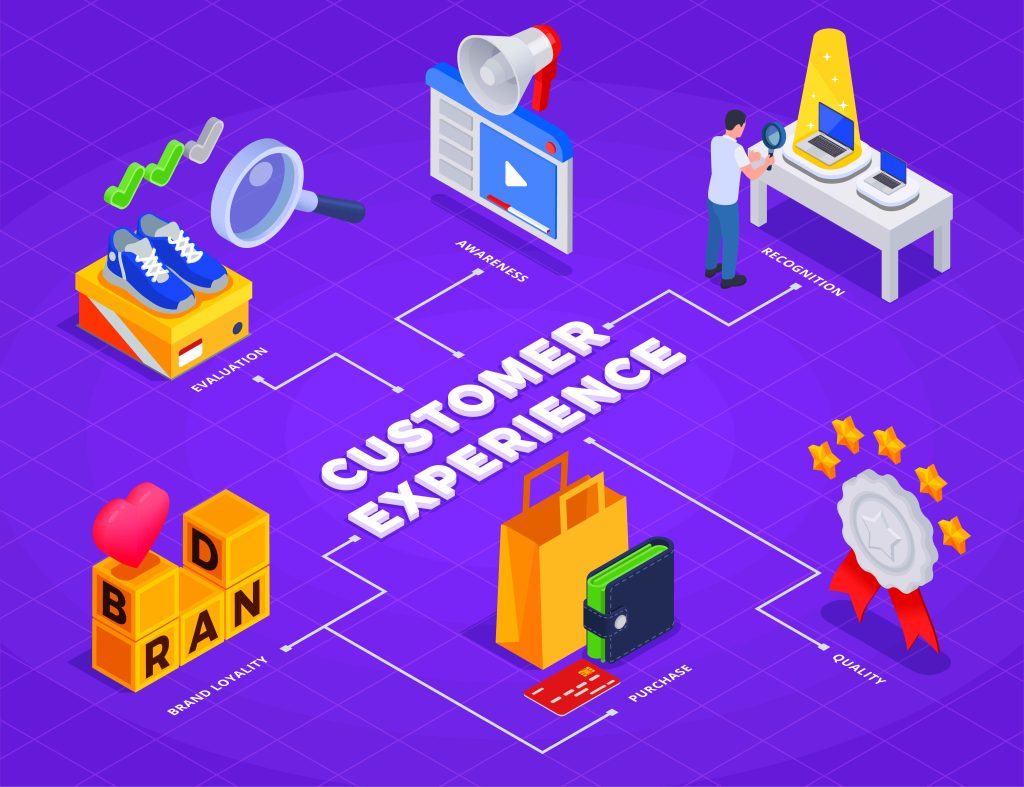To identify your target customers, you need to consider several factors. Here are some steps you can take to define your target audience:
1. Market Research:
Conduct market research to gather information about your industry, competitors, and potential customers. Look for demographic data, psychographic information, and buying behaviours that align with your products or services.
2. Customer Profiling:
Create customer profiles or buyer personas that represent your ideal customers. Consider factors such as age, gender, location, occupation, income level, interests, values, and challenges. These profiles help you understand your customers on a deeper level.
3. Existing Customer Analysis:
Analyse your existing customer base to identify common characteristics and trends. Look for patterns in demographics, purchase behaviour, preferences, and reasons they chose your products or services.u
4. Surveys and Feedback:
Conduct surveys or gather feedback from your existing customers to gain insights into their needs, pain points, and motivations. Ask for feedback on your offerings, customer experience, and areas for improvement.
5. Competitive Analysis:
Study your competitors’ customer base to determine if there is overlap or if there are untapped market segments they are not serving effectively. Identify gaps in the market that you can address with your products or services.

6. Target Market Segmentation:
Divide your potential customers into segments based on shared characteristics or needs. For example, you might segment based on age, income level, geographic location, or industry. This allows you to tailor your marketing messages and strategies to specific segments.
7. Test and Refine:
Implement marketing campaigns targeted at specific segments and monitor the response. Track metrics such as engagement, conversion rates, and sales to evaluate the effectiveness of your targeting. Refine your target audience based on the data and insights you gather.
8. Customer Feedback and Iteration
Continuously seek feedback from your customers and adjust your targeting as needed. As your business evolves, your target audience may also shift, so it’s important to stay connected with your customers and adapt accordingly.
9. Pain Points and Needs:
Dive deeper into understanding the pain points, challenges, and needs of your target customers. What problems are they trying to solve? How can your products or services address those pain points effectively? Identifying and addressing customer needs is essential for developing compelling value propositions.
10. Behaviour and Motivations:
Explore the behaviour and motivations of your target customers. What influences their purchasing decisions? Do they prioritise quality, affordability, convenience, sustainability, or other factors? Understanding their motivations helps you position your offerings in a way that resonates with them.
11. Customer Behaviour Analysis:

Utilise data analytics tools to gain insights into your customers’ behaviour. Track website analytics, customer interactions, purchase history, and other relevant metrics to understand their preferences, browsing habits, and buying patterns. This data can guide your marketing strategies and personalisation efforts.
Join the NoLimits Business Community
Are you a business owner looking to take your business to the next level? Join our innovative community of like-minded professionals and gain access to a wealth of valuable resources, including a community portal to chat with other business owners, ebooks, business development software, and growth events that will transform the way you do business. Best of all, these resources are completely free and will be available to you forever.
But the benefits of joining our NoLimits business community don’t stop there. By becoming part of our community, you’ll have the opportunity to connect with other business owners, share insights and ideas, and build valuable relationships that will help your business thrive. Don’t miss out on this amazing opportunity to supercharge your business and join us today!
12. Social Media Listening:
Monitor social media platforms to listen and engage with your target customers. Pay attention to their conversations, comments, and feedback related to your industry or products. This can provide valuable insights into their interests, preferences, and sentiment towards your brand.
13. Geographic Considerations:
Consider the geographic location of your target customers. Are they local, regional, national, or international? Understanding their location can help you tailor marketing campaigns, pricing strategies, and distribution channels accordingly.
14. B2B vs. B2C:
Determine whether your target customers are businesses (B2B) or individual consumers (B2C). The marketing and sales approaches will differ significantly depending on your target audience type. B2B customers may have longer sales cycles, require personalised solutions, and engage in relationship-based decision-making.
15. Niche Markets:
Assess whether your products or services cater to a specific niche market. Niches often have unique characteristics, preferences, and needs. By specialising in a niche, you can differentiate yourself from broader market competitors and tailor your offerings to the specific requirements of that niche.
16. Early Adopters and Influencers:
Identify early adopters and influencers within your target market. These individuals or groups are often trendsetters and have the potential to influence others’ purchasing decisions. Engaging with them can help amplify your brand’s reach and build credibility.
17. Customer Lifetime Value (CLV):
Consider the potential long-term value of your customers. Focus not only on acquiring new customers but also on retaining and nurturing existing ones. Loyal customers who make repeat purchases can provide ongoing revenue and act as brand advocates.
18. Feedback and Iteration:
Continuously gather feedback from your customers through surveys, reviews, and direct communication. Actively listen to their suggestions, complaints, and ideas for improvement. This feedback loop helps you refine your products, services, and customer experience to better serve your target audience.

19. Evolving Target Audience:
Recognize that your target audience may evolve over time. Market trends, changes in consumer behaviour, or shifts in your business focus can influence your target customer profile. Stay attuned to these changes and adapt your strategies accordingly.
20. Customer Empathy:
Cultivate empathy towards your target customers. Put yourself in their shoes and strive to understand their perspectives, challenges, and aspirations. Empathy allows you to develop more meaningful connections, better anticipate their needs, and deliver exceptional customer experiences.
Remember, understanding your target customers is an ongoing process. Regularly revisit your customer research, stay updated on industry trends, and seek opportunities for customer engagement and feedback. The better you understand your target audience, the more effectively you can tailor your business strategies to meet their needs and drive business growth.
Who are your most profitable customers?
Identifying your most profitable customers is crucial for optimising your business’s revenue and profitability. Here are some steps to help you identify your most profitable customers:
1. Define Profitability Metrics:
Determine the key metrics that define profitability for your business. This could include factors such as the average purchase value, frequency of purchases, customer lifetime value (CLV), profit margin per customer, or customer acquisition cost (CAC). Establishing clear profitability metrics allows you to objectively evaluate and compare customer segments.
2. Analyze Customer Purchase Data:
Gather and analyse your customer purchase data to identify patterns and trends. Look for customers who consistently make high-value purchases, make repeat purchases, or have a high CLV. Examine factors such as order size, frequency, product preferences, and overall spending patterns.
3. Segment Customers:

Segment your customer base based on profitability metrics. This can be done by grouping customers into categories such as high-value customers, moderate-value customers, and low-value customers. This segmentation allows you to focus your efforts on the most profitable segments.
4. Customer Profitability Analysis:
Conduct a customer profitability analysis to determine the profitability of each customer segment. This involves calculating the revenue generated from each segment minus the associated costs (e.g., marketing, production, customer support) to get the net profit. Compare the profitability of different segments to identify the most profitable ones.
5. CLV Calculation:
Calculate the CLV for each customer segment. CLV represents the predicted revenue a customer is likely to generate over their lifetime as your customer. Consider factors such as average purchase value, purchase frequency, customer retention rate, and customer acquisition cost in your calculations. Customers with higher CLV are generally more profitable.
6. Assess Profitability Drivers:
Understand the factors that drive profitability for each customer segment. Analyse the characteristics, behaviours, and preferences of your most profitable customers. Identify commonalities among them, such as demographics, psychographics, industry type, or purchase behaviour. This information helps you refine your targeting and marketing strategies.
7. Customer Feedback and Satisfaction:
Consider customer satisfaction and feedback when evaluating profitability. Satisfied customers are more likely to become repeat customers and generate positive word-of-mouth, contributing to profitability in the long term. Collect feedback through surveys, reviews, or direct interactions to assess satisfaction levels.
8. Pareto Principle (80/20 Rule):
Apply the Pareto Principle, also known as the 80/20 rule, which suggests that roughly 80% of your profits come from 20% of your customers. Identify the top 20% of your customers who contribute the most to your profitability and prioritise efforts to retain and nurture them.
9. Cross-Sell and Upsell Opportunities:
Explore cross-selling and upselling opportunities within your most profitable customer segments. Identify additional products or services that align with their needs and preferences. By increasing their average order value, you can further boost profitability.

10. Customer Retention Strategies
Implement customer retention strategies to maintain relationships with your most profitable customers. Offer exclusive perks, loyalty programs, personalised communication, and excellent customer service to enhance customer loyalty and reduce churn.
11. Adjust Marketing and Sales Strategies:
Tailor your marketing and sales strategies to target your most profitable customer segments. Allocate marketing resources and campaigns towards reaching these segments effectively. Craft messaging, offers, and promotions that resonate with their specific needs and preferences.
12. Continuous Monitoring and Evaluation:
Regularly monitor and evaluate customer profitability metrics to track changes over time. Customer profitability can evolve, so it’s important to stay up-to-date and adjust your strategies as needed.
By identifying your most profitable customers, you can allocate resources more effectively, enhance customer relationships, and focus on initiatives that drive maximum return on investment. Regularly review and refine your analysis to ensure your strategies align with the evolving profitability dynamics of your customer base.
By Gary Hales
Join the NoLimits Business Community
Are you a business owner looking to take your business to the next level? Join our innovative community of like-minded professionals and gain access to a wealth of valuable resources, including a community portal to chat with other business owners, ebooks, business development software, and growth events that will transform the way you do business. Best of all, these resources are completely free and will be available to you forever.
But the benefits of joining our NoLimits business community don’t stop there. By becoming part of our community, you’ll have the opportunity to connect with other business owners, share insights and ideas, and build valuable relationships that will help your business thrive. Don’t miss out on this amazing opportunity to supercharge your business and join us today!

